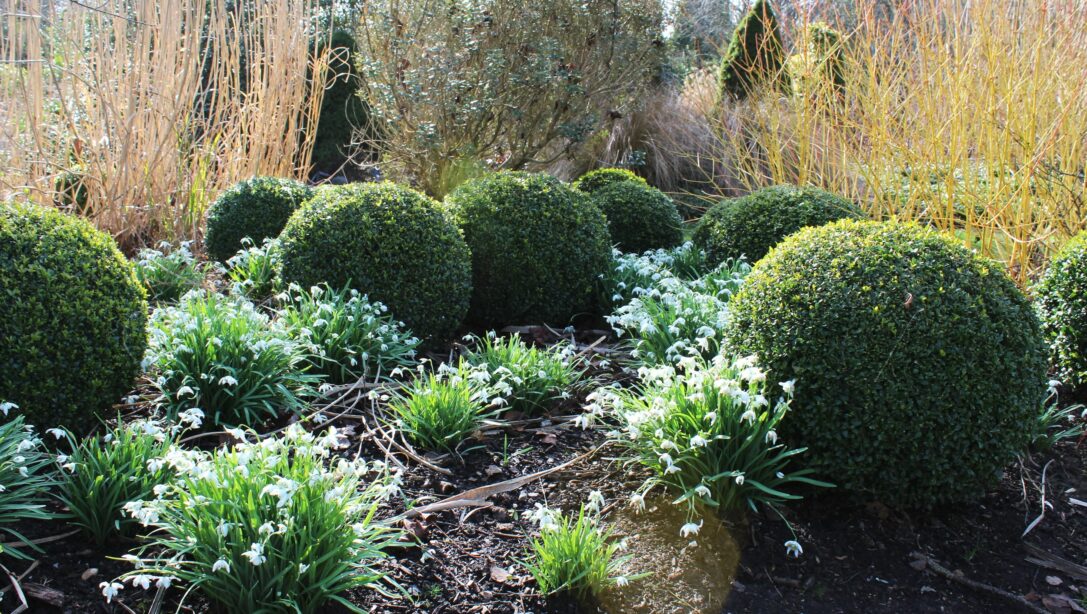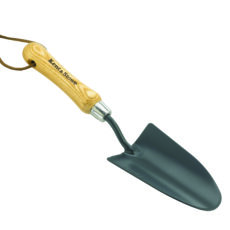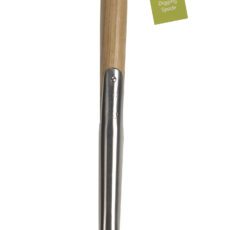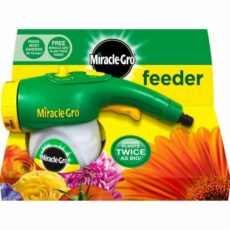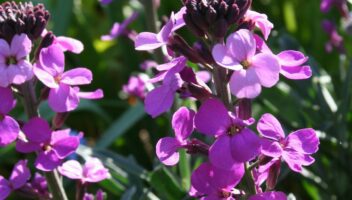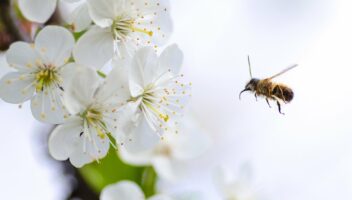Spring is usually the busiest season in the garden, with a wide variety of plants available. To help you plan your spring garden, we are sharing some of our favourite spring plants and how best to grow them.
Best Early Spring Flowering Plants (March – April):
As winter’s grip begins to loosen, the garden awakens with the first signs of spring, heralded by a chorus of early blooming flowers. These resilient plants brave the lingering chill to bring bursts of colour and renewed vitality to the landscape, signalling the start of a new growing season.
1. Amelanchier Canadensis
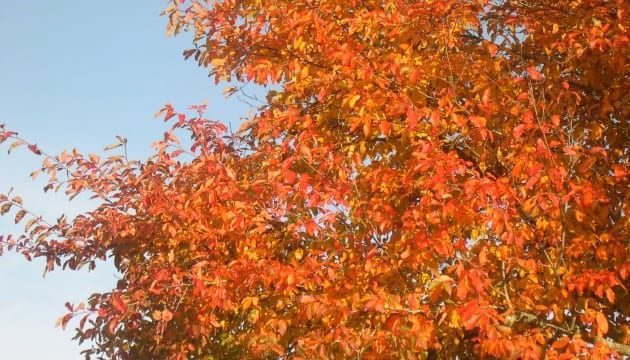
Amelanchier canadensis is a dense, upright shrub that produces abundant sprays of dainty white flowers in early spring, followed by red-purple fruits in the summer. In the autumn, the plant takes centre stage again as the bush sets the garden alight with its vivid colours of reds, oranges and yellows.
It is an ideal choice for the back of the flower bed as a small tree or an informal hedge. This easy-going plant grows in any soil conditions and orientation, but to enjoy the best of its autumn colour, plant it in full sun.
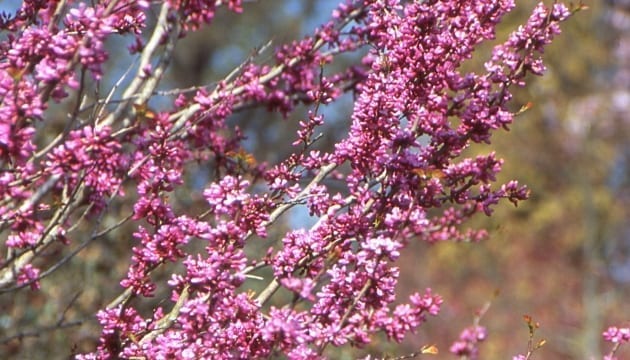
2. Cercis chinensis ‘Avondale’
Cercis chinensis ‘Avondale’ is a form of the Chinese redbud that makes a large shrub or small tree. It has masses of purple-pink pea flowers on bare shoots in late March and April. The leaves then unfurl; they are very big, heart-shaped, pale green in colour, and turn yellow in autumn.
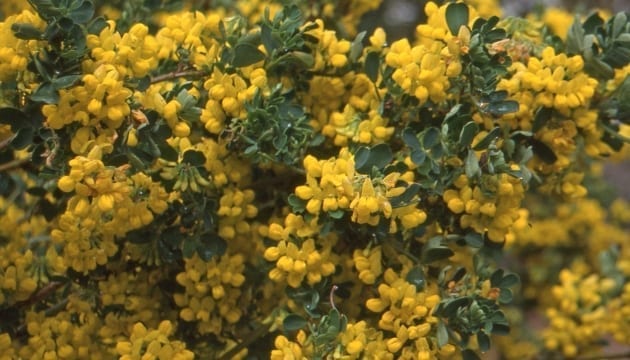
3. Coronilla glauca ‘Citrina’
Coronilla glauca ‘Citrina’ is an evergreen shrub with scented yellow flowers, ideal for a sunny, sheltered spot near a path or wall. It will also grow in a container if it doesn’t get too large, which is ideal for a smaller garden. It is a pretty easy-going plant if it gets plenty of sun and will grow in most soil types.
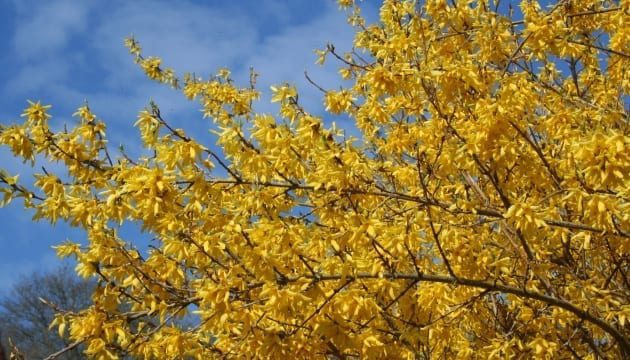
4. Forsythia intermedia
Nothing says spring is on its way like a Forsythia. The branches of neat-growing Forsythia intermedia will be wreathed in bright-yellow flowers that light up the garden. In beds and borders, combine this easy-to-grow plant with other spring-flowering shrubs and early Crocuses or Narcissus. Reliable and hardy, it’s equally good as an informal hedge or wall shrub, reaching a height and spread of 3m x 3m.
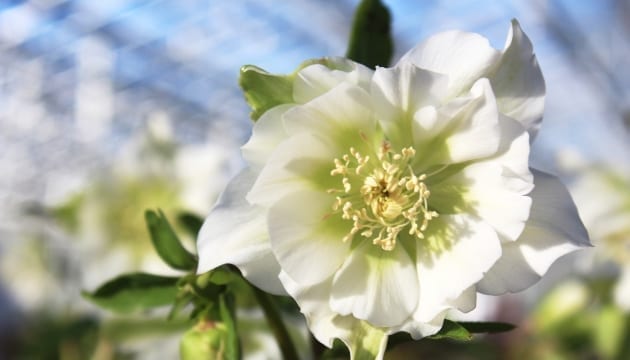
5. Hellebores
Hellebores are fantastic plants as they are small, evergreen, reliable and adaptable. They have the added benefit of being suitable for shade situations, even under established trees, which is unusual. In borders, they tolerate a wide range of normal soil types, making them a reasonably easy plant to grow. If your Hellebores have old, untidy foliage, this can be removed before flowering to better show off the flowers when they emerge.
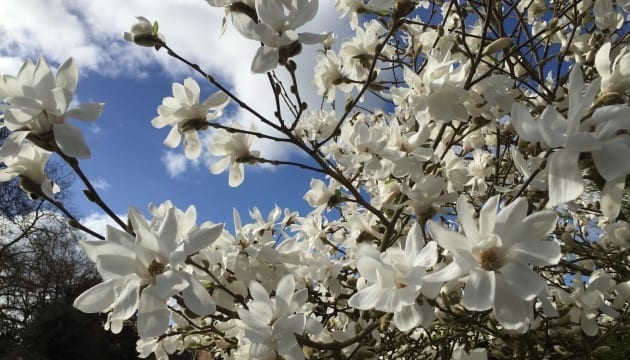
6. Magnolia
Magnolias can grow into striking shrubs or trees with beautiful white to deep pink flowers. They are a great specimen for sunny spots but will also grow in light shade. Avoid planting in frost pockets in the garden, as this can damage the flowers. They only need a light prune, as hard pruning can reduce the volume of the lovely flowers.
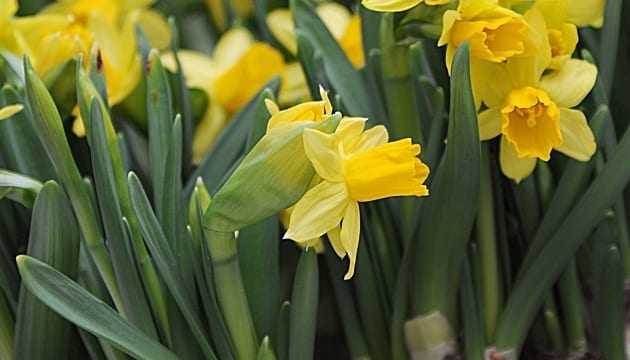
7. Narcissus ‘Tête á Tête’
Narcissus ‘Tête á Tête’ is a daffodil variety that produces abundant flowers because they are multi-headed. It is easy to grow and excellent for all bright situations, even those that are too exposed for other taller spring bulbs. It needs to be deadheaded as the first flowers fade to keep it tidy.
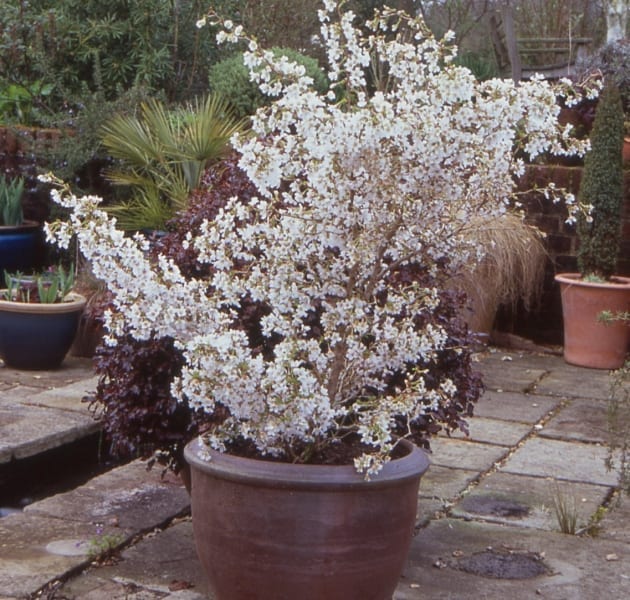
8. Prunus incisa ‘Kojo-no-Mai’
Prunus incisa ‘Kojo-no-mai’ is always one of the first plants to look for in spring, with its attractive zig-zag branching. The arrival of its nice, pale pink flowers in early spring indicates warmer weather is on the way, and the season is just about to begin. This variety is suitable for several situations, including flower borders and beds, city and courtyard gardens, Japanese-themed gardens, and rock gardens. It also makes an ideal container plant. It grows in any moist or well-drained soil and requires little care.
Best Mid Spring Flowering Plants (April – May):
As spring matures and transitions towards its peak, a delightful array of mid-season blooms emerges to grace the garden with their colours and fragrances. These plants mark the midpoint of spring, bridging the gap between the early blossoms and the late bloomers, ensuring a continuous spectacle of nature’s beauty.
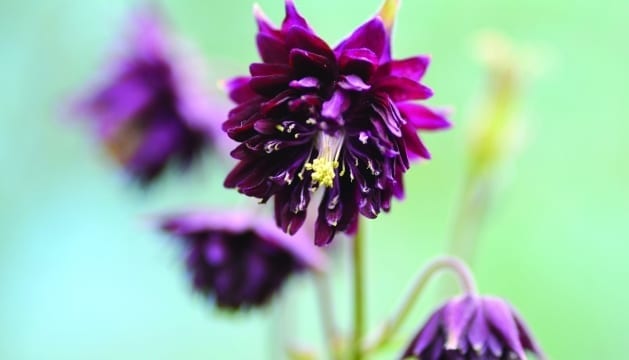
1. Aquilegia
Aquilegia, also known as ‘Granny’s Bonnets,’ are brilliant cottage garden plants. They have show-stopping flowers in a fantastic range of flower colours. Some, like ‘Nora Barlow,’ are shaped like pom-poms, while others, such as the ‘Mckana Hybrids’ have flowers shaped like stars. They are easy to grow, but they do self-seed around the garden and tend to hybridise easily.
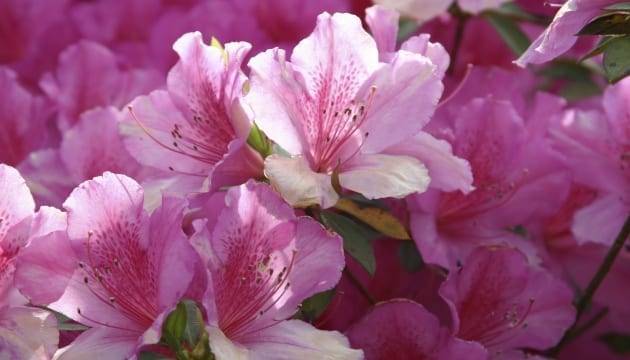
2. Azaleas
Azaleas are an easy-to-care-for genus of shrubs, either evergreen or deciduous, and available in many colours. Some are even fragrant.
Azaleas are good for statement planting in borders or for mass, woodland-type planting schemes. They prefer well-drained, ericaceous soil or can be planted in tubs if your soil type is not correct.
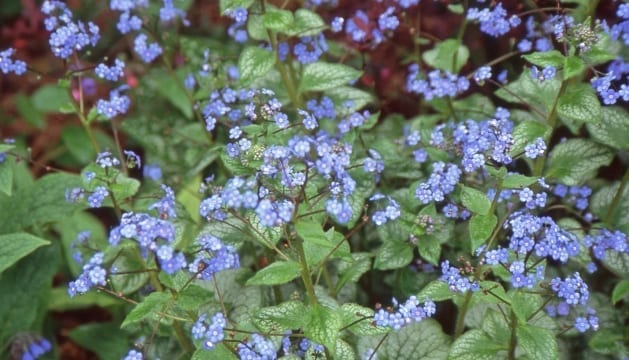
3. Brunnera
Brunnera are, arguably, the understated heroes of the shady border. They have lovely forget-me-not blue flowers in spring. If you get varieties such as ‘Jack Frost’ or ‘Looking Glass’, the silver leaves look tropical in a woodland border. They, like Pulmonaria, prefer shady woodland settings where their leaves will not scorch in the sun. They pair well with Pulmonarias and Hardy Geraniums in the garden.
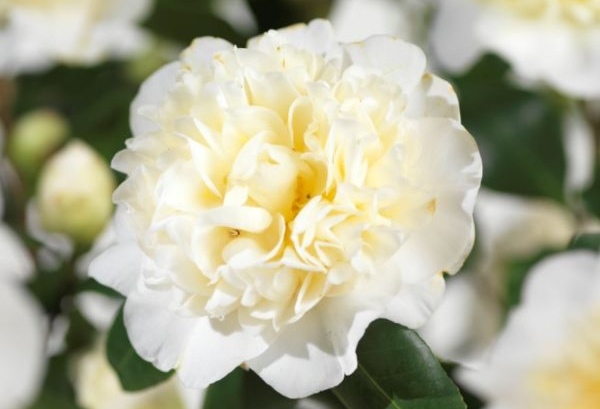
4. Camellia
Camellia is a genus of evergreen shrubs with a variety of flowers, from single to semi-double. As they flower from winter into spring, they add interest to the garden at a time when little else is in bloom. Camellias prefer a sheltered location because their flowers can suffer from frost damage. They do need a bit of care – plant in ericaceous soil and water well with rainwater to avoid bud drop.
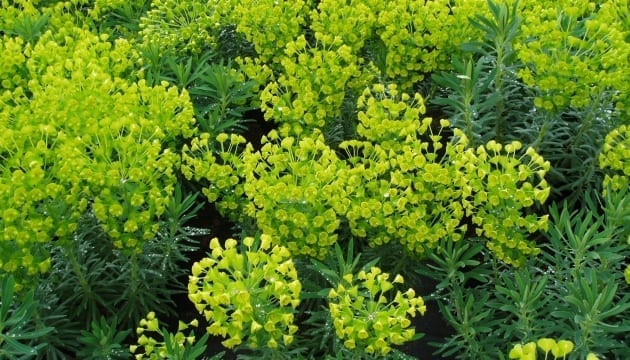
5. Euphorbia wulfenii
Euphorbia wulfenii is a fantastic, tall plant. This unusual, architectural, evergreen shrub grows to 1.5m with big spikes of lime green flowers. It is great to brighten a hard-to-fill, shady spot. It looks lovely planted in combination with Brunnera, with their little blue flowers; Bergenia ‘Overture’ and Polypodium ferns. Euphorbias can be irritating because their sap is quite potent.
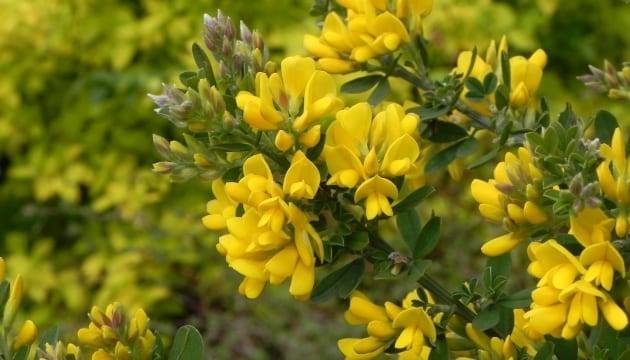
6. Genista ‘Porlock’
Genista ‘Porlock’ is a plant to look forward to seeing in spring. It produces masses of short sprays of fragrant, bright yellow flowers in spring. This variety is ideal for sheltered areas of the garden and grows well even in poor soil, so long as it is well-drained. It is also best in full sunlight. Be aware that it will not tolerate hard pruning and new growth will not rejuvenate old wood.
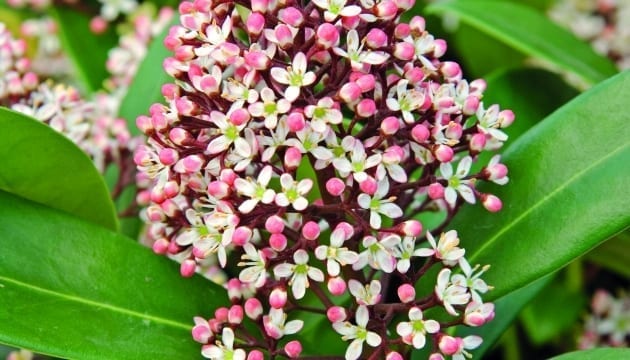
7. Skimmia japonica ‘Rubella’
Skimmia japonica ‘Rubella’ is an amazing evergreen mound. With its deep green foliage and dazzling red flower buds throughout the winter, it looks great all year. The buds open in early spring to reveal the sweetest of fragrances from its white flowers. This is a must for any planted container, either mono-planted or as a centrepiece within a mixed bedding arrangement. Planting it in direct sunlight will cause the leaves to turn yellowish green.
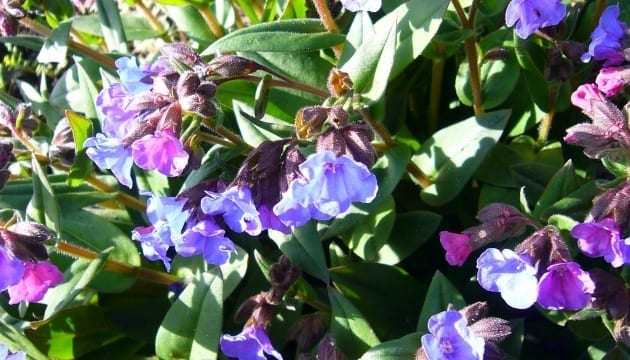
8. Pulmonaria
Pulmonaria make great groundcover plants for shade, are a good pollen source for bees and have lovely spotted leaves, giving them year-round interest. Varieties with two-tone flowers are particularly striking, such as ‘Victorian Brooch,’ ‘Majeste’ and ‘E.B. Anderson’. In full sun, the leaves will scorch, especially the variegated varieties. Cut back the old flowers after flowering to allow fresh foliage to develop and mulch to retain moisture during dry spells.
Best Late Spring Flowering Plants (May – June):
As spring progresses towards its end, the garden continues to flourish with a new wave of late bloomers. These plants add the perfect finishing touch to the spring garden, extending the season’s splendour into the early days of summer.
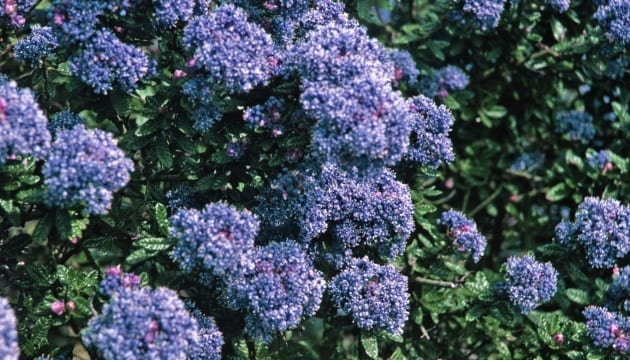
1. Ceanothus ‘Puget Blue’
Ceanothus ‘Puget Blue’ is a real stalwart of the garden. This evergreen sets small, dark purple buds in early spring. These often begin to unfold a couple of weeks after Easter, creating dense masses of vibrant powder-blue flower balls that stand in stark contrast to their dark-green, veined leaves. Reduce any new shoots by a third after flowering has finished, feed generously after pruning and apply a mulch.
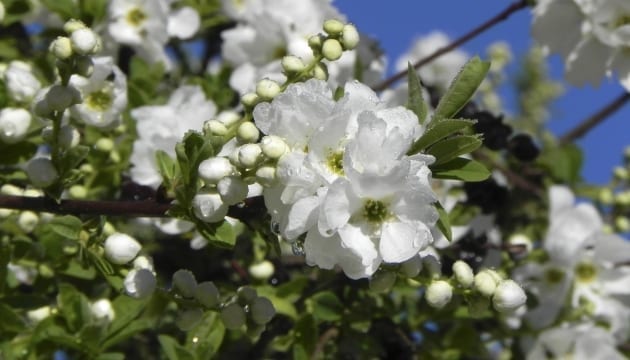
2. Exochorda x macrantha ‘The Bride’
Exochorda x macrantha ‘The Bride’ is a fantastic hardy shrub with great garden presence, earning it the RHS Award of Garden Merit. The startlingly white flowers are quite large (3cm across) and thickly carried in 10cm-long racemes at the ends of short side-shoots. The branches tend to weep, and it has been spotted growing on sloping banks near water. Immediately after flowering, remove flowering shoots and thin out the others.
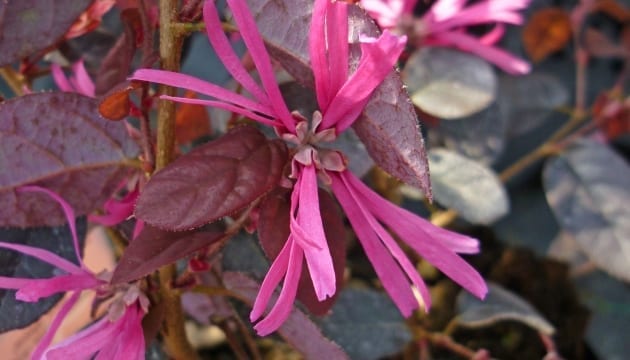
3. Loropetalum var. rubrum ‘Fire Dance’
This underrated plant offers lovely purple foliage that it goes on to keep during winter. In early spring, it produces spidery, lightly fragrant pink flowers. This is a good plant for a small garden or a sheltered spot. It will tolerate shady areas but prefers the sun. It also grows best in ericaceous compost.
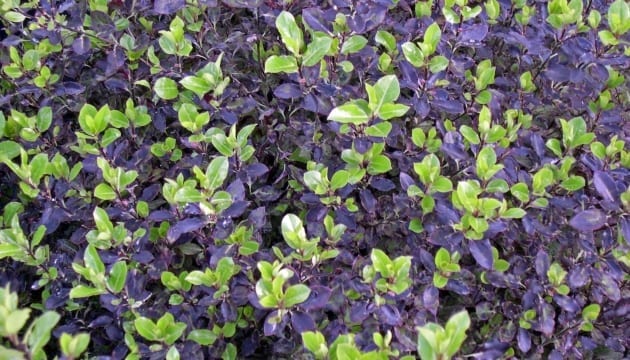
4. Pittosporum tenuifolium ‘Tom Thumb’
Pittosporum tenuifolium ‘Tom Thumb’ is an unsung hero. It produces lovely dark-red leaves throughout the year. These turn green at the tips then change to dark red as the leaves mature, meaning the plant is always changing colour. This is a good plant to bring out the beauty of other coloured plants.
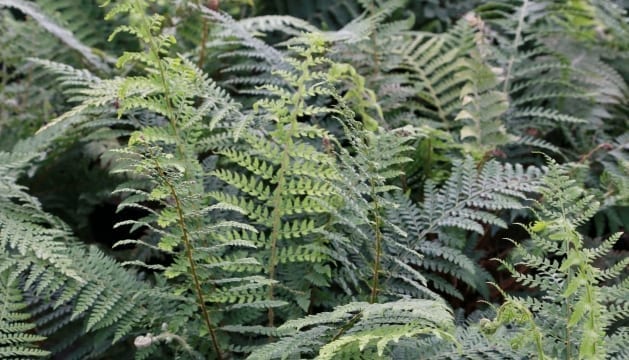
5. Polystichum setiferum
Polystichum setiferum, like all ferns, will delight in spring with unfurling fronds and lovely feathery foliage that softens the edges of the borders. This variety is quite tall – it will reach around 0.6m. It is a pretty easy-going plant – just make sure it doesn’t get too dry.
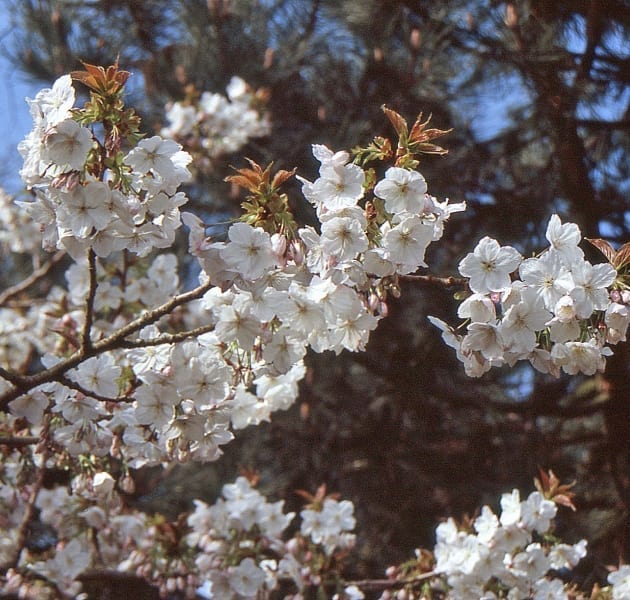
6. Prunus ‘Tai-haku’
Prunus ‘Tai-haku’ is a magnificent flowering cherry that can reach a height of 8m. In spring, it produces clusters of white, scented flowers in combination with a bronze new leaf. It does need space – this is not the best choice for a small garden – but otherwise, it is a reasonably easy plant to care for and very hardy.
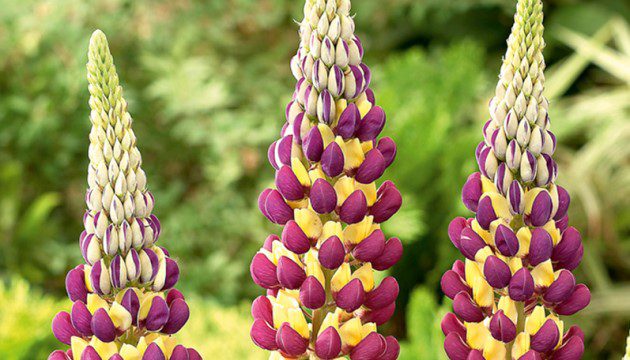
7. Lupinus
Lupinus, commonly known as lupins, are striking perennials known for their tall, spiky racemes of flowers in vibrant shades of blue, purple, pink, and white. They are excellent for cottage gardens and attract bees and other pollinators. Lupins prefer well-drained soil and full sun to partial shade. Deadhead spent flowers to encourage a second bloom in late summer.
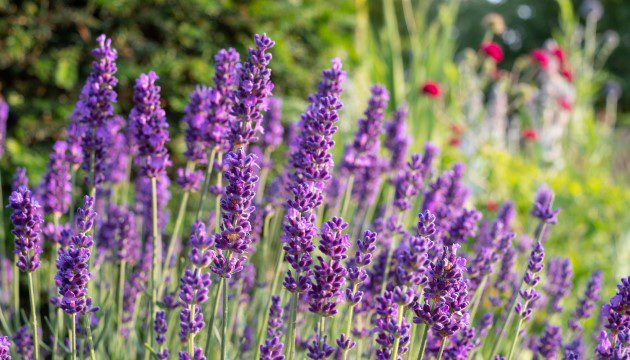
8. Lavandula
Lavandula, or lavender, is a fragrant perennial that is perfect for adding both beauty and a lovely scent to your garden. The silvery foliage and spikes of purple flowers make it a great addition to borders, rock gardens, or as a hedge. Lavender prefers full sun and well-drained soil. It is drought-tolerant once established and needs minimal care.
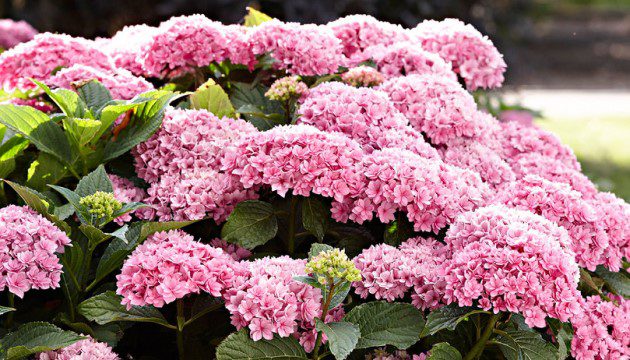
9. Hydrangea macrophylla
Hydrangea macrophylla, also known as bigleaf hydrangea, offers large, mophead or lacecap blooms that change colour based on the soil pH. They can be blue in acidic soil and pink in alkaline soil. These shrubs thrive in moist, well-drained soil and partial shade. Prune them after flowering to maintain shape and promote new growth.
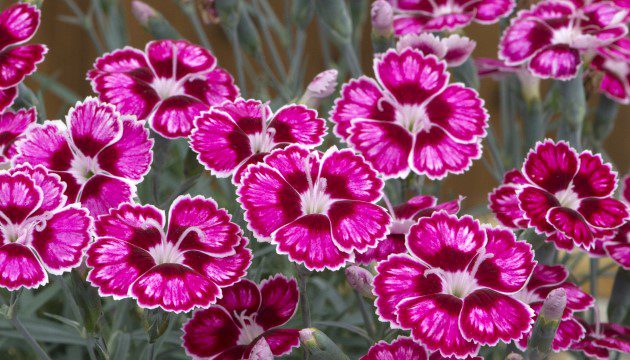
10. Dianthus ‘Flutterby’
Dianthus ‘Flutterby’ is a charming perennial with a long flowering period from spring into summer. It has fragrant, frilly pink or white flowers that are excellent for borders and containers. Dianthus prefers full sun and well-drained soil. Regular deadheading will promote continuous blooming.
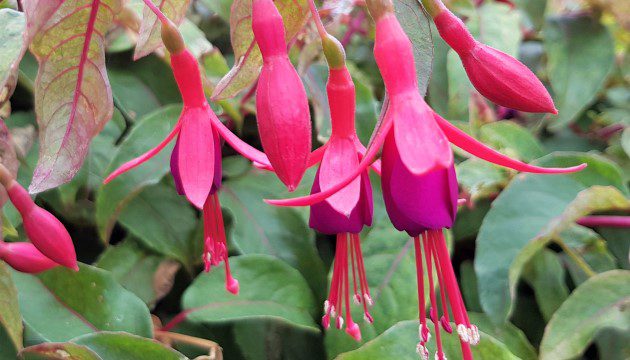
11. Fuchsia
Fuchsia plants are renowned for their beautiful, drooping flowers that come in shades of pink, red, purple, and white. These are ideal for hanging baskets, containers, or as part of a mixed border. Fuchsias thrive in partial shade and need regular watering to keep the soil consistently moist. Protect them from harsh midday sun and strong winds.
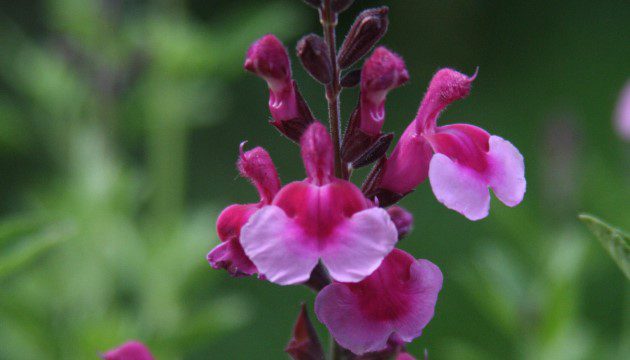
12. Salvia
Salvia, or sage, is a versatile genus that includes both annuals and perennials. Known for their spikes of tubular flowers in shades of blue, purple, red, and white, salvias attract pollinators such as bees and hummingbirds. They prefer full sun and well-drained soil. Salvia plants are drought-tolerant once established and require minimal maintenance.
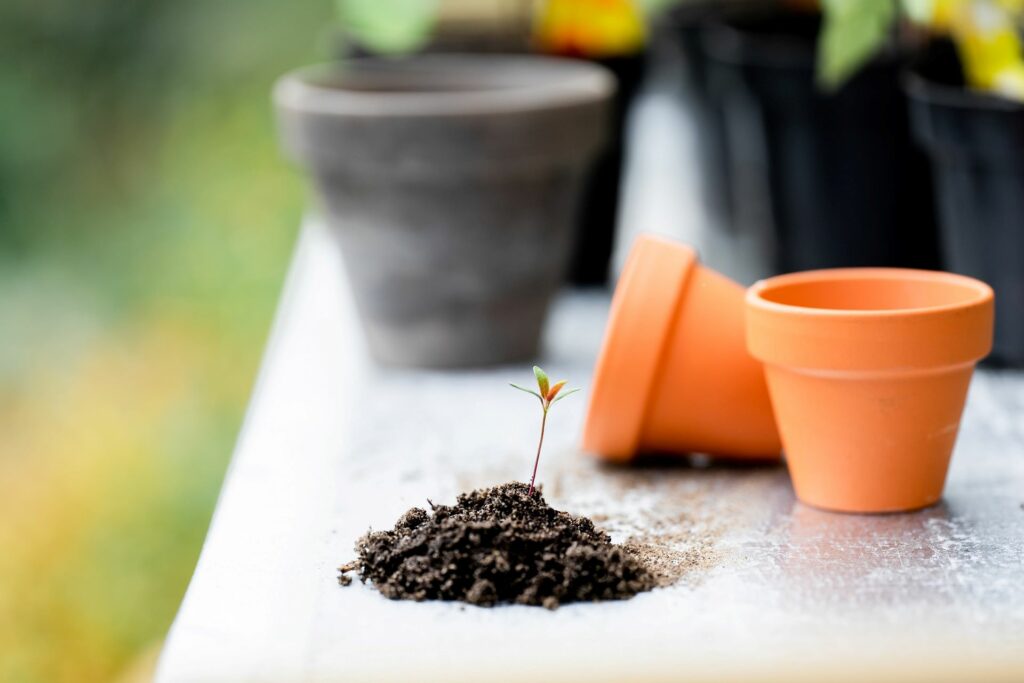
Tips for Feeding Plants in Spring
If your plants are in pots, a good general rule to follow is to feed them every couple of weeks. This is to replenish the nutrients in the soil.
Your ornamental shrubs don’t need feeding as regularly as your potted plants. A generous application of fertiliser to your fruits and vegetables will aid in their growth.


